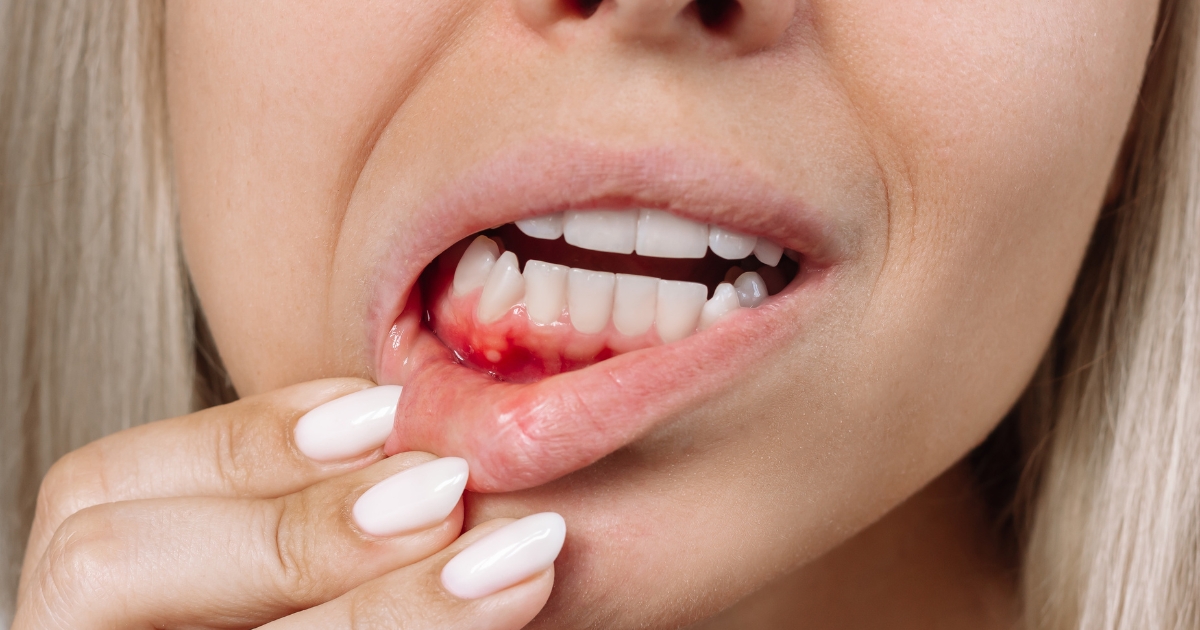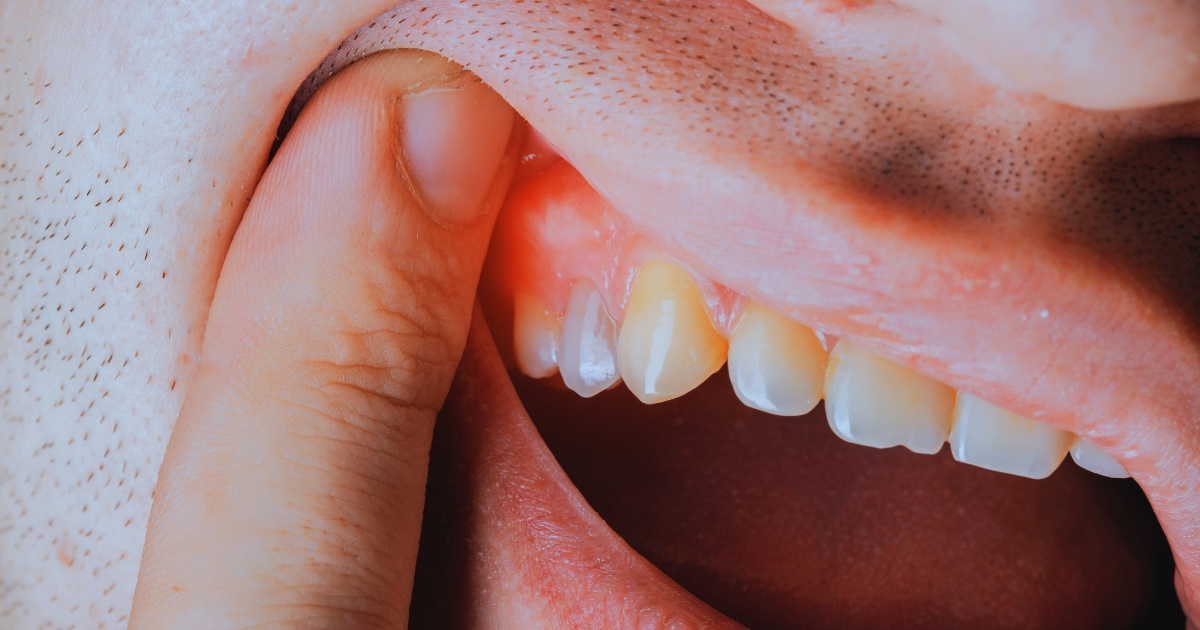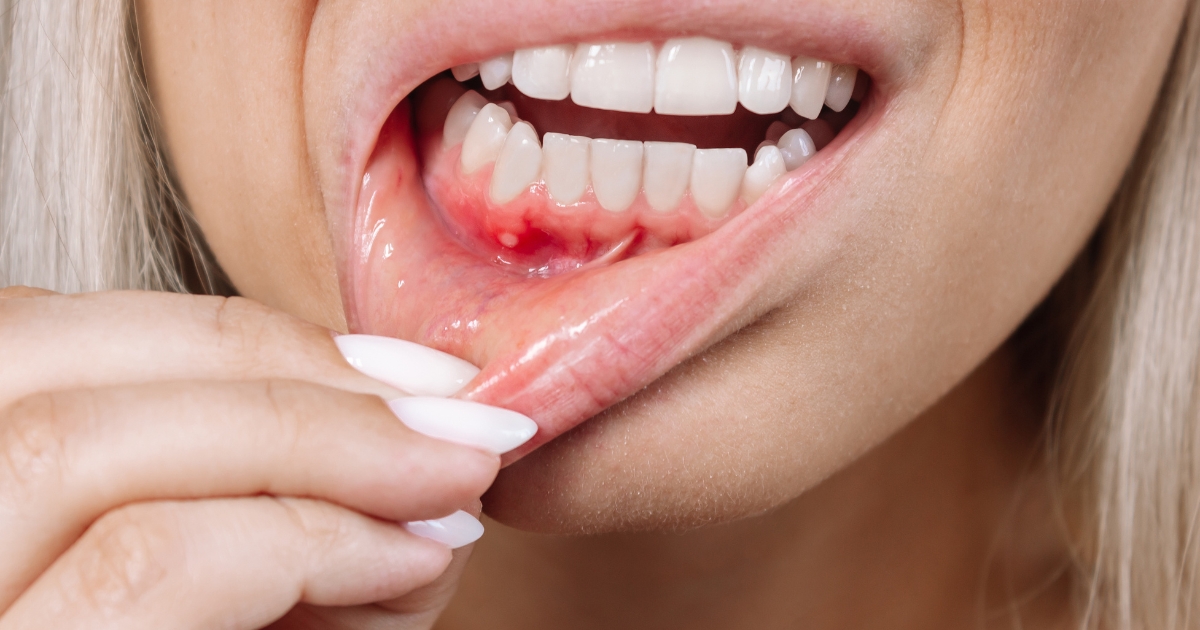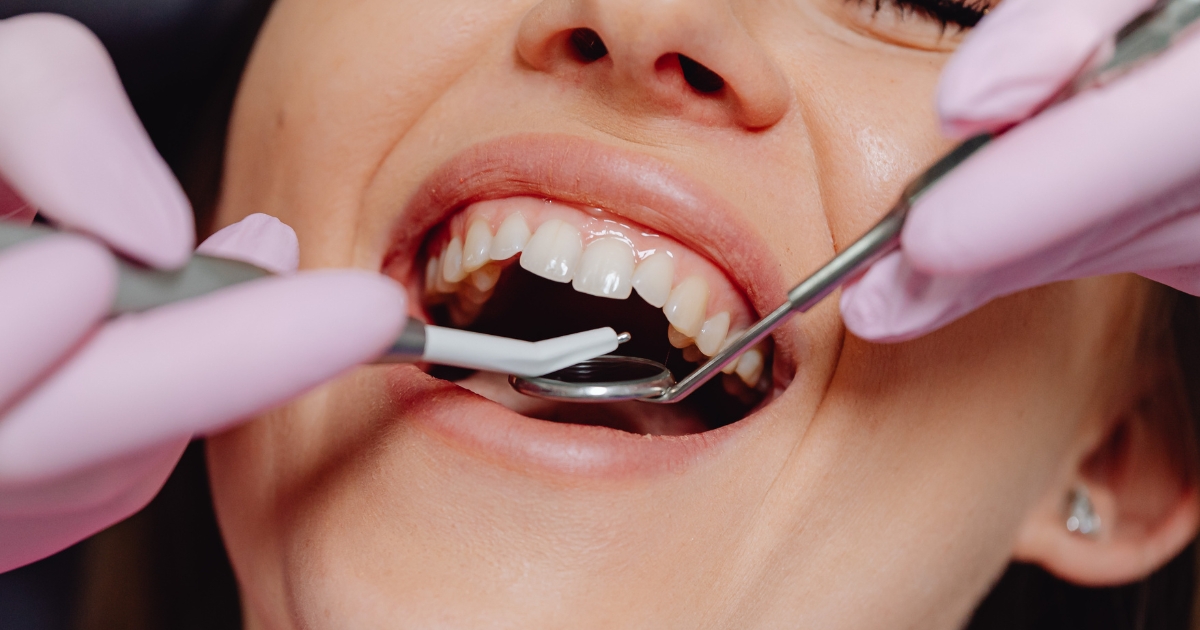Call Us Today 817-737-7668

Gum recession may seem innocuous. However, it’s a dental warning you don’t want to dismiss. Almost half of adults aged 30 and older experience gum recession. Surprised? You should be. Those receding gums make your teeth appear longer and leave them vulnerable to serious consequences. Sensitive teeth, exposed roots, and even tooth loss may be in your future.
This dental issue happens when the gum tissue surrounding your teeth pulls back. It exposes more of the tooth or its root. This condition affects your smile and paves the way for serious dental issues.
If you’re tired of dealing with this issue or want to prevent it, you’re in the right place. Discover a logical, step-by-step strategy to handle gum recession effectively and keep your gums healthy.
What Is Gum Recession?
Gum recession occurs when the gum tissue surrounding the teeth gradually wears away and exposes the tooth’s root. This can cause sensitivity, increased risk of decay, and aesthetic concerns. A gum recession doesn’t happen overnight. It’s often a slow process that sneaks up on you.
Common Causes:
This dental issue has several causes, including:
- Brushing too hard or the use of a hard-bristled toothbrush.
- Gum disease, which destroys gum tissue and supporting bone.
- Genetics—occasionally, thin or weak gums run in the family.
- Poor dental hygiene causes plaque buildup.
- Hormonal fluctuations, specifically in women.
Symptoms:
A gum recession is not necessarily painful. This is the reason people ignore this most of the time. That said, you may notice:
- Sensitivity to teeth, specifically when eating or drinking hot, cold, or sweet foods.
- Teeth are longer than they used to be.
- Exposed tooth roots.
- Gums are tender or bleed when you brush.
Risks of Ignoring Gum Recession
Gum recession is more than superficial. It’s a real dental health hazard. Almost 47% of adults over 30 experience gum disease. This tends to cause gum recession, as the CDC states. Neglecting gum recession may cause the risk of tooth decay, sensitivity of teeth, and even losing teeth. Exposed tooth roots occur when the gums recede. They expose the roots to bacteria buildup and cavity formation.
The risks don’t stay in your mouth. Studies have shown a solid connection between oral health and systemic health conditions. Unhealthy gums have been linked to cardiovascular illnesses, diabetes, and respiratory diseases.
Bacteria from infected gums can travel to the bloodstream. This will cause ongoing inflammation and influence overall health. You must act early to stop this recession. It isn’t all about preserving your smile. It’s also about protecting your whole body from possible threats to your health.
A Logical Strategy for Treating Gum Recession
Step 1: Diagnosis and Professional Evaluation
Periodic visits to the dentist are essential when it comes to early detection of gum recession. Your dentist will use periodontal probes. It will help determine the gum pocket depth and X-rays, which will significantly evaluate bone loss. Early diagnosis is less stressful and has a good prognosis.
Step 2: Enhance Oral Hygiene Habits
Correct oral hygiene habits can prevent or reverse gum recession.
Gentle Brushing Techniques: Refrain from harsh brushing. You should place your toothbrush at a 45-degree angle to your gums and use gentle, circular strokes.
Selecting the Proper Tools: Select a soft-bristled toothbrush and non-abrasive toothpaste. In addition, electric toothbrushes with pressure sensors can avoid over-brushing.
Flossing and Mouthwash: Consider flossing once daily to eliminate plaque between teeth. You can also use an antibacterial mouthwash to decrease plaque and promote gum health.
Step 3: Dietary and Lifestyle Changes
What you eat and how you live immensely influence your gum health.
Supportive Foods: Eat foods high in vitamins C and D, including citrus fruits, leafy greens, and dairy products. These nutrients promote gum health and minimize inflammation.
Avoid Destructive Habits: Smoking is a significant risk factor for this issue. Nicotine decreases blood flow to the gums. It affects healing. Refrain from tobacco and restrict acidic foods and beverages. This is because they can damage enamel and irritate gums.
Step 4: Treatment Options
The optimal treatment is based on the degree of your gum recession.
Non-Surgical Solutions:
Scaling and Root Planing: It is a deep cleaning procedure. This process eliminates plaque and tartar beneath the gum line.
Desensitizing Agents: Special products will decrease tooth sensitivity and enhance gum comfort.
Surgical Solutions:
Gum Grafting: The tissue is taken from another area of your mouth. Once done, it is joined to the damaged area. It covers exposed roots and halts further recession.
Pinhole Surgical Technique: A conservative procedure where the gum is repositioned over exposed roots without stitches.
Step 5: Long-Term Maintenance
Preventing this problem from progressing requires an adequate and routine oral care regimen.
Oral Care Habit: Consider brushing at least twice daily and flossing once. An antibacterial mouthwash is used to keep the gums healthy.
Scheduled Dental Check-ups: Visit your dentist every six months. They can track your gum condition and offer professional cleaning. It will help you avoid gum recession progression.
Healthy Living: Eat well, drink water, and abstain from harmful habits towards your gums, like smoking or biting hard things.
When to Visit a Professional?
Not every case of gum recession calls for action now. However, any of these indications should not be dismissed. See a dentist if you feel your gums are constantly getting sensitive, develop bleeding gums, or become concerned about how their appearance changes.
Selecting the most appropriate dental professional is crucial. Opt for a dentist who specializes in treating gum disease. A periodontist with expertise in gum care can provide cutting-edge treatments and personalized guidance on properly treating gum recession. The earlier you treat gum recession, the higher your possibility of maintaining your smile and good oral health.
Gum recession is not a mere cosmetic but a serious health problem. An intelligent approach—from diagnosis through enhancing oral care, lifestyle modifications, and treatment explorations to sustaining long-term gum health—effectively prevents gum recession.
You must take action today to help avoid serious oral problems down the road. Use healthier habits, see your dentist regularly, and don’t allow gum recession to damage your smile.





